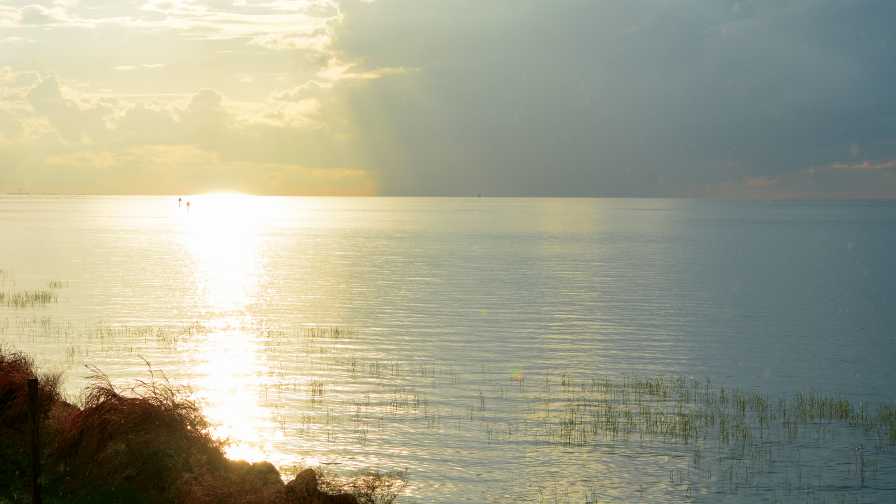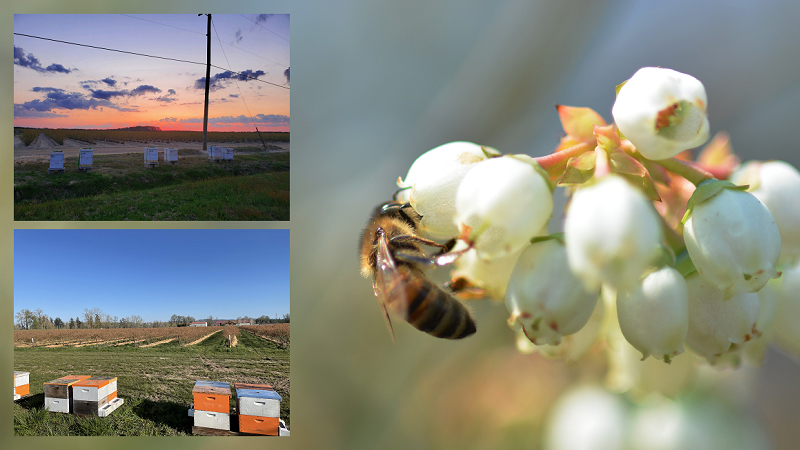Epic Algae Blooms Strand South Florida in a Sea of Green

According to a report from the New York Times, this year’s algae bloom covers 90% of the 730-square-mile Lake Okeechobee in South Florida, larger than what water management officials have seen in the past.
The 2018 wet season is off to the races in South Florida, setting up the scenario for algae-bloom troubles in the region again this year. Even before the rainy season officially started, record rainfall in May dropped more than 300% of the monthly averages across the region. Martin and St. Lucie counties received 450% more than the historical record.
That rainfall caused Lake Okeechobee to rise by more than a foot, which prompted the U.S. Army Corps of Engineers (USACE) to begin releases from the lake on June 1 to the northern estuaries to ensure flood protection south of the lake. The record rains also inundated the water conservation areas, which caused them to rise above their regulated schedules.
In June, Gov. Rick Scott issued an emergency order to give the Florida Department of Environmental Protection (DEP) and South Florida Water Management District (SFWMD) authority to implement actions to lower lake levels and move more water into conservation areas.
Algae Emergency
The large water releases to keep Lake Okeechobee in check has prompted algae blooms in the St. Lucie and Caloosahatchee rivers. On July 9, Gov. Scott issued another state of emergency due to the algae blooms for Glades, Hendry, Lee, Martin, Okeechobee, Palm Beach, and St. Lucie counties.
This emergency declaration allows DEP and the SFWMD to waive various restrictions and regulations to store water in additional areas south of the lake, which will help alleviate the USACE water discharges that are causing harmful algal blooms in Florida’s rivers and coastal estuaries.
The toxic algae is blue-green in color and is known as cyanobacteria. According to the New York Times, Lake Okeechobee experiences algal blooms annually, but this year’s covers 90% of the surface of the 730-square-mile lake, larger than what officials have seen in the past.
Reservoirs and Repairs
Just days after the Governor’s algae emergency declaration, the White House Office of Management and Budget (OMB) approved the Everglades Agricultural Area (EAA) Reservoir Project. That sends the plan back to the USACE, who will submit it to Congress for authorization.
According to the SFWMD, the 10,100-acre reservoir and 6,500-acre man-made marsh should reduce discharges to the St. Lucie and Caloosahatchee by 63%. It also would allow more than 120 billion gallons of clean water to be sent south to the Everglades every year.
“This project, spearheaded by State Sen. Joe Negron and coupled with existing efforts, will greatly reduce the harmful Lake Okeechobee discharges once again threatening our coastal communities,” Sen. Marco Rubio said in a statement regarding the OMB approval.
On a separate track, the USACE announced in early July that it would use supplemental disaster relief funds to expedite repairs to the Herbert Hoover Dike after Hurricane Irma. The $514 million provided through supplemental funding — in conjunction with the $96 million included in the U.S. House’s Fiscal Year 2019 Energy and Water Appropriations bill — will allow the USACE to complete the Herbert Hoover Dike’s rehabilitation by 2022-2023.
The USACE announcement comes at a crucial time for the dike, which is currently rated as “critically near failure.” Reports issued by the Corps have determined in any given year, the chance of a dike failure is one in six. Other studies have concluded that catastrophic failure would cause significant loss of lives, impact millions of Floridians, and result in economic losses totaling tens of billions of dollars.
This year’s Florida Grower Citrus Achievement Award winner Congressman Tom Rooney (R-FL) requested the funding as a senior Republican on the House Appropriations Committee. “For years, all of South Florida has advocated for Washington to take our water issues seriously and it was extremely discouraging when repairs moved at a snail’s pace due to lack of funding,” Rooney said in a statement. “Now, Floridians finally have the assurance our waterways can be clean and safe with an end date for repairs finally on the horizon.”










